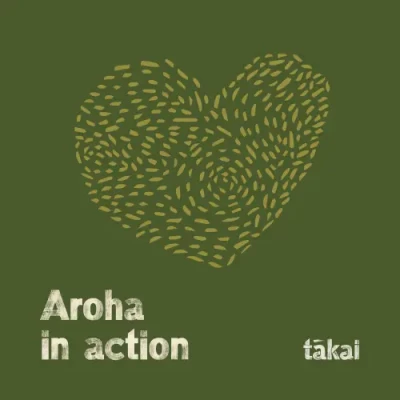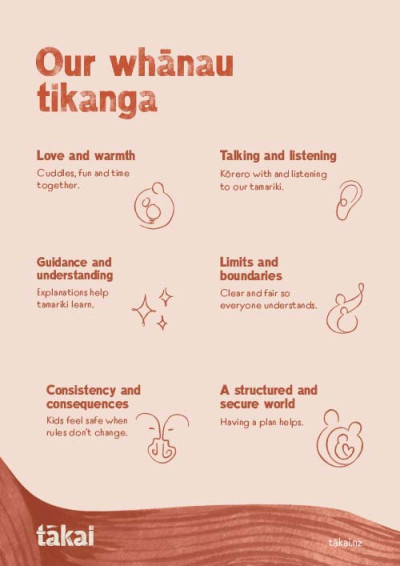
Fears and the 6 principles
There are any number of scary events that can negatively affect our children’s feelings of safety and security — discover the 6 ways to help identify and manage their fears.
Just about anything can be a source of fear for a young child, especially people, places or things that are new or out of the ordinary. They can become anxious when something doesn’t make sense or makes them feel that events are out of their control. What may seem to be innocent and harmless to us may be a source of worry and concern to young tamariki.
Imaginary fears
A child’s developing imagination can provide rich and magical fodder for exciting and fascinating play. However, it can also make certain things seem scary and create havoc in their brain and equilibrium. During this stage it might be difficult for tamariki to distinguish between fantasy and reality.
Real-life fears
Meanwhile, there also are some scary things that it’s reasonable for them to feel scared or afraid of. We can use the framework of ‘The six principles of effective discipline’ to examine what’s not working well for a child and where their fears might be coming from.
1. When love and warmth are missing, a child may experience fear through:
- insecure attachment
- fear of a parent leaving
- fear of being removed from the home
- fear of a parent or other adult who is behaving in a strange or scary way.
2. When talking and listening are malfunctioning, a child may be afraid of:
- verbal abuse
- being ignored, scolded or yelled at
- bullying from other children.
3. When guidance and understanding are lacking, a child may be afraid of adults or older children who are:
- angry
- stressed
- erratic
- neglectful
- authoritarian.
4. When limits and boundaries are missing, a child may be:
- living with inappropriate expectations
- living with punishing and antisocial attitudes
- watching unsuitable or scary programmes on TV or the internet.
5. Without consistency and consequences, a fearful environment is created through:
- erratic parenting
- neglect
- double standards
- custody battles
- lack of responsible adult supervision.
6. Things that challenge a structured and secure world can create fears through:
- homelessness
- transience
- inadequate services
- financial difficulties
- dangerous neighbourhoods
- poverty
- crime
- floods and earthquakes
- transitions (like starting school, getting a new sibling or parents having new partners).
How can adults use the 6 principles to help children through their fears?
1. Love and warmth
- give hugs for reassurance
- stay close
- practice deep breathing together
- accept their feelings
- try not to be judgmental
- tune into their individual temperaments — some children take a while to get accustomed to new situations or people.
2. Talking and listening
- explain what’s happened
- check for understanding
- spend time listening
- use clear communication:
- ask, ‘are you OK?’
- share funny stories
- help them put their feelings about their fears into words.
3. Guidance and understanding
- try to be patient
- encourage lots of play and creativity
- draw, sing and tell stories to calm fears
- be a role model
- actively teach tamariki what’s expected of them
- try to determine the actual cause of their fears.
4. Limits and boundaries
- have as few rules as possible and stick to them, for example, all family members need to:
- help out around the home
- get enough sleep
- follow whānau routines for meals and bedtimes.
5. Consistency and consequences
- provide safe, acceptable activities
- use a calm, reasonable voice
- keep promises — or if you can’t, explain why things have to change
- help tamariki prepare for situations that might be frightening.
6. Structured and secure world
- don’t be afraid to get help with anger issues, budgeting advice and alcohol counselling
- cultivate friends and whānau who support each other with give and take.
Resources for childhood fears
These resources were produced specifically to help whānau with the aftermath of the big earthquakes, as well as a variety of other situations:
Helping-each-other-after-the-earthquake [PDF, 1.3 MB]
Good books for children about fears
Another good source of help for talking with tamariki about their fears is children’s books. A visit to the local library and a talk with the children’s librarian could be very helpful.
The Brightly website(external link) suggests 9 titles to help children overcome their fears. Children may be afraid of the dark, heights, loud noises, being the centre of attention, going to the hospital, thunder, being separated from loved ones, their first day at school — just about anything.
The Family Education website(external link) has a list of books that help children to face bad dreams, the dark, the doctor, dentist, hospital, thunder, the toilet, death and separation anxiety.
 pdf 5 MB
pdf 5 MB












